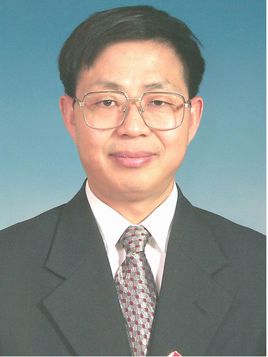乔利杰——2016第四届国际腐蚀工程大会主会场演讲嘉宾
2016-07-22 18:45:01
作者:本网整理 来源:国家材料腐蚀与防护科学数据中心
Effect of Hydrogen on Pitting and Stress Corrosion Cracking
[abstract] Hydrogen could enter into metals in many processes such as steel making, welding, pickling, the heat treatment in hydrogen gas, cathodic protection,storage in moist air and corrosion in aqueous media. For a material susceptible to hydrogen embrittlement (HE), the hydrogen concentration absorbed during the processes could be high enough to induce HE under a suitable stress level as in the case of high strength steels in 3.5% NaCl solution.For materials that are not susceptible to HE, the role of hydrogen in corrosion process is paid enough attention.
The salt fog tests of IF steel indicated that the growth and development of the rust and pits on the hydrogen charged specimen are faster than that of the uncharged one, displaying that hydrogen can decrease the corrosion resistance in the chloride ions' environment. The anodic polarization tests show that the corrosion and pitting potentials decrease with the rise of both the charging current density and the chloride ions concentration. For a given chloride ion concentration, the increase of the charging current density makes the pitting and the corrosion potentials drop sharply. Under a given hydrogen charging current density, the drops of the pitting and corrosion potentials have an approximately linear relationship with the increase of the chloride ions' concentration. It indicates that the hydrogen and chloride ions can affect the corrosion behavior. For 310 stainless steel, the pitting susceptibility was strongly influenced by the hydrogen and was correlated with the semi-conductive properties of passive film. No pitting occurred for over 6 days for the samples without precharged hydrogen in 6% FeCl3 solution at room temperature. For samples precharged with very small current density of 0.1 mA/cm2, pitting occurred within 80 minutes. For 2205 duplex stainless steel , pitting are observed on the hydrogen-charged specimen after 6 days of immersion in 6% FeCl3 solution, while no pitting on the uncharged specimen even after more than 30 days of immersion. Hydrogen also changed the oxide film from p�type to n-type.
The role of hydrogen in SCC of 310 austenitic stainless steel in a boiling 42% solution was investigated. The results showed that both hydrogen and stress would increase the dissolution rate, and the effects of hydrogen and stress on the dissolution rate were synergistic rather than simply additive. Hydrogen lowered the threshold stress and the shortened fracture time of SCC in a boiling MgC12 solution by a factor of1/5 and 10, respectively.
时间:2016年8月9日 11:00-11:30
报告人:乔利杰
个人简介

乔利杰教授
乔利杰,男,1957年7月出生,博士,现任北京科技大学材料科学与工程学院副院长,教授、博士生导师,材料失效研究所所长,北京科技大学腐蚀与防护中心主任。
免责声明:本网站所转载的文字、图片与视频资料版权归原创作者所有,如果涉及侵权,请第一时间联系本网删除。